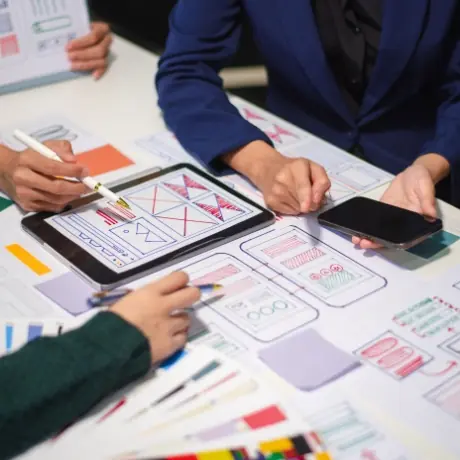When it comes to building a successful digital product, understanding the difference between a product designer and a UX designer is crucial. Both roles are often confused, but each plays a unique part in the design process. In this article, we’ll break down what makes these two design roles distinct. Product design focuses on creating the functionality and aesthetic of a product, while UX design hones in on the user experience, ensuring it’s intuitive and enjoyable. If you’re looking to hire a UI UX designer, knowing whether you need a product designer or a UX designer will save you time and resources.
In the world of design, it’s easy to mix up the roles of UX and product designers. Yet, both contribute differently to the success of a project. A product designer is typically involved in the broader scope of product development, combining design and strategy to create cohesive experiences. On the other hand, a UX designer zeroes in on optimizing user experience, focusing on usability, accessibility, and interaction. Throughout this article, we’ll cover everything from the basics of product design and UX design to the specific skills and responsibilities needed for each role. We’ll also explore key similarities and differences, and share tips for choosing between a product designer and a UX designer.
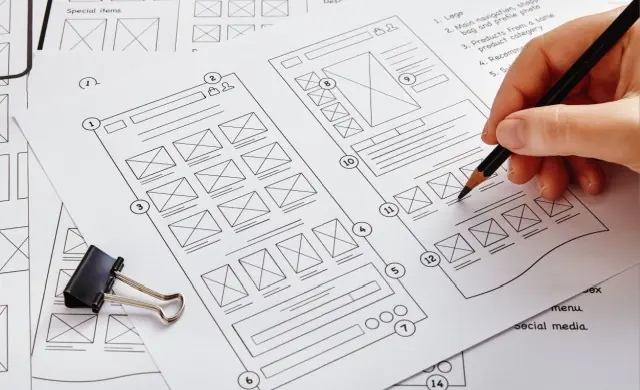
What is Product Design?
Product design is all about creating new products or improving existing ones to meet user needs and market demands. It focuses on solving real problems by mixing creativity with practical thinking. The process includes steps like ideation, prototyping, and testing. The goal is to make a final product that works well and looks good. A big part of product design is knowing who the product is for and making sure it’s useful, possible to make, and makes sense for the business. Product designers often follow design thinking, which puts the user at the center of the process.
One of product design’s main goals is to make sure the final product works well and looks nice. This means focusing not just on how the product functions, but also on how it feels and looks. A product designer must think about usability, user experience, and even graphic design to create a product that users will love. The process is ongoing, with designers constantly improving their work based on feedback and testing. This careful approach helps great products stand out in a crowded market.

Who is a Product Designer?
A product designer is a versatile professional responsible for creating and improving products that are both functional and visually appealing. They focus on the user experience (UX) and visual design, ensuring that products not only work well but also look good and meet user needs. Product designers often work within product teams. They collaborate with other designers, engineers, and stakeholders to align the design with business goals.
In their role, product designers engage in various stages of product design, from conducting user research to developing prototypes and iterating on designs based on feedback. They use design thinking to approach problems creatively, always keeping the end user in mind. This holistic approach helps them craft products that stand out in the market by balancing aesthetics, functionality, and user satisfaction.
What Skills does a Product Designer need?
To excel as a product designer, certain skills are essential. These skills enable designers to effectively translate ideas into functional and visually appealing products that meet user needs. A strong foundation in both technical abilities and soft skills is crucial for navigating the complexities of product design, from initial concepts to final execution.
- Requisite and relevant undergraduate degree or formal qualification
- 3+ years of professional experience in UX/UI design
- Experience working with design and prototyping tools such as Sketch, Adobe XD, or Figma
- Skill in applying design thinking when planning and scoping project work
- Expertise in wireframing/prototyping
- Practical knowledge of collaborating with engineers to release features, products, and/or services
- Expertise in complex applications
- Great visual and verbal communication skills
- Ability to communicate and collaborate with others with ease
Responsibilities of a Product Designer
The role of a product designer encompasses a variety of responsibilities, each contributing to the overall success of the product. From understanding user needs to collaborating with different teams, a product designer’s responsibilities ensure that the product not only meets functional requirements but also provides a seamless and enjoyable user experience.
- Contributing the right knowledge to a design system
- Having a well-applied portfolio of functional designs across desktop and mobile devices
- Understanding the user’s mindset from the onset of the product design process
- Conducting research
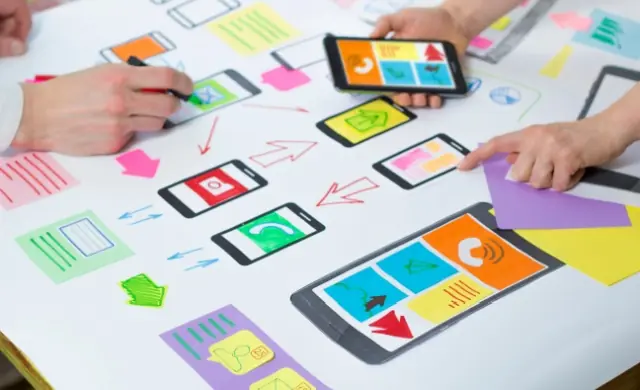
What is UX Design?
UX design, or User Experience design, is all about making products that are easy and enjoyable for users to interact with. It focuses on understanding what users need and want, ensuring that every part of the product is simple and satisfying to use. This process includes activities like research, creating models (called prototypes), and testing to build design solutions that improve how users experience the product.
One of the most important parts of UX design is research. UX designers, often with help from a UX research agency, study the target audience to find out what users struggle with and what they expect. They use tools like wireframes and prototypes to plan and test their ideas, making sure everything fits user needs and the goals of the business. Before launching, a UX audit checks if the product is easy to use and accessible, finding any problems that need fixing.
UX design also ensures that products work well on all devices through responsive web design. UX metrics, like how long tasks take or how often users make mistakes, measure if the design meets user expectations and improves their satisfaction.
Although UX design and graphic design are different, they work together. Graphic design handles how the product looks, like colors and fonts. UX design makes sure these elements help create a positive experience for the user.

Who is a UX Designer?
A UX designer, or User Experience designer, is a professional who focuses on creating products that offer the best possible experience for users. They work to make sure that every interaction with a product is easy, intuitive, and enjoyable. This involves understanding user needs through research, designing solutions, and then testing those designs to ensure they meet the intended goals. UX designers often work closely with other team members, such as UI designers and developers, to bring their ideas to life.
In their role, a UX designer uses various tools and techniques, including visual design elements, to craft a seamless experience. They consider how users will navigate a product and ensure that it is not only functional but also visually appealing. For businesses looking to improve their digital presence, hiring a UI UX design agency can be a strategic move. These agencies provide the expertise needed to create designs that resonate with users and drive engagement.
Overall, a UX designer plays a crucial role in shaping how a product feels and functions, ensuring that it meets both user needs and business objectives.
What Skills does a UX designer Need?
A product designer must possess a well-rounded skill set to excel in their role. These skills enable them to effectively create, iterate, and refine products that meet both user needs and business goals. From technical abilities in design software to a deep understanding of user experience principles, these skills form the foundation of a successful product designer’s toolkit.
- A profound understanding of the UX design process
- Expertise in design and prototyping tools such as Sketch, Adobe XD, or Figma
- Proficiency in prototyping and wireframing
- Understanding interaction design principles
- Experience in creating user stories, personas, and designing storyboards
- Experience in interpreting data and comparative feedback
Responsibilities of a UX Designer
The responsibilities of a product designer involve translating user needs and business goals into effective and engaging digital experiences. They play a crucial role in the design and development process, ensuring that the final product is user-friendly, visually appealing, and aligned with the company’s objectives. These responsibilities require collaboration, creativity, and a keen understanding of design principles.
- Experience in dealing with and conducting user research and competitor analysis
- Defining information architecture and creating sitemaps
- Understanding business standards and being able to translate organizational goals and objectives into digital experiences
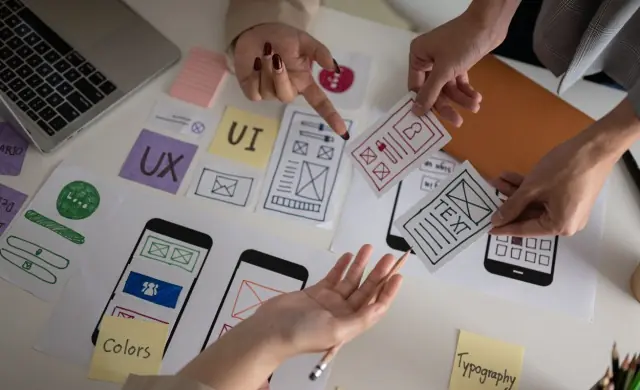
Key Similarities between a Product Designer and a UX Designer
Both product designers and UX designers play crucial roles in creating successful digital products. Despite their different focuses, they share several common goals and methods. Here are key similarities between a product designer and a UX designer:
1. User-Centered Approach
Both product designers and UX designers focus on the user’s needs. They aim to create a user-friendly product by understanding user behavior and preferences. Ensuring the product meets user expectations is central to both roles, focusing on usability and satisfaction.
2. Design Thinking
Design thinking is a fundamental method used by both product designers and UX designers. This approach involves empathizing with users, defining problems, ideating solutions, and prototyping. This iterative process helps in developing effective and innovative solutions for the end-user.
3. Collaboration with Stakeholders
Both roles need collaboration with various stakeholders, including developers, marketers, and business managers. Product designers and UX designers work closely with these teams to ensure the design aligns with business goals and technical constraints.
4. Focus on Prototyping
Creating prototypes is a shared task for product designers and UX designers. Prototyping allows them to test and refine designs before full-scale development. This process helps in identifying issues early and making necessary adjustments to enhance the user experience.
5. Feedback Incorporation
Product designers and UX designers both rely on user feedback to improve their designs. Gathering and analyzing feedback helps them understand what works and what doesn’t, leading to more user-centered and effective solutions.
While the specific duties of a product designer and a UX designer may differ, their shared focus on user needs, design thinking, collaboration, prototyping, and feedback incorporation highlights their similarities. Both aim to ensure the product delivers a seamless and satisfying user experience.
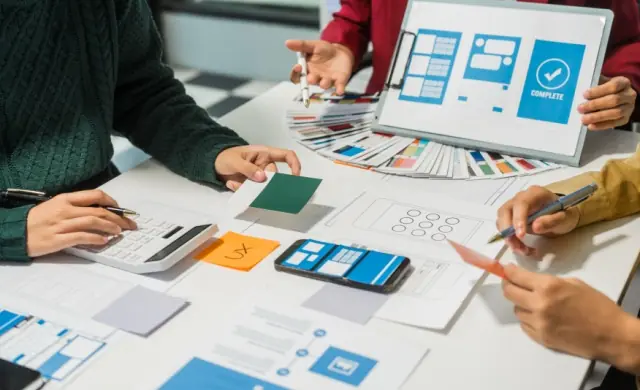
Key Differences between a Product Designer and a UX Designer
Understanding the differences between a product designer and a UX designer is essential for determining which role fits your project needs. While both roles aim to improve user interactions, their focuses and responsibilities differ significantly.
1. Scope of Work
Product designers and UX designers differ in the scope of their work. Product designers handle the entire product lifecycle, from initial concept through to final design. They are involved in all aspects of the product, including its form, function, and user experience. In contrast, UX designers focus primarily on the user experience aspect, ensuring that the digital design is intuitive and user-friendly.
2. Design Focus
The design focus of product designers and UX designers varies. Product designers are concerned with the overall product, including aesthetics, functionality, and usability. They balance multiple design elements to create a cohesive product. UX designers, on the other hand, specialize in user-centered design, concentrating on how users interact with the product and optimizing those interactions for ease and satisfaction.
3. Technical Involvement
Product designers often engage in technical aspects of product development. They work on detailed design specifications and collaborate closely with developers to ensure that the final product meets both design and functional requirements. UX designers, while also working with developers, primarily focus on creating user flows, wireframes, and prototypes to enhance user experience.
4. User Interaction
User interaction is a key area where product designers and UX designers differ. UX designers create detailed user flows and wireframes to map out user journeys and interactions with the product. They conduct usability tests to refine these interactions. Product designers consider these user flows but also integrate the product’s visual design and branding elements into their work.
5. Role in Development
The role of product designers and UX designers in development varies. Product designers are involved throughout the product’s development, from initial ideation to final testing. They ensure that all aspects of the product align with the intended design. UX designers are typically more focused on user research and testing, ensuring the product is optimized for the end-user experience.
While a product designer and a UX designer share common goals of enhancing user interactions, their roles differ significantly. Product designers manage the overall product design, while UX designers specialize in optimizing user experience and interface design.
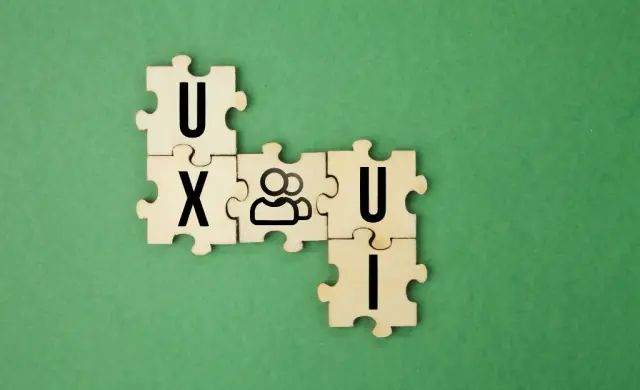
Great Tips for Choosing Between a Product Designer and a UX Designer
Choosing between a product designer and a UX designer can impact the success of your project. Each role brings unique strengths to the table. Here are some tips to help you decide which role best fits your needs.
1. Define Your Project Needs
Start by defining your project needs. If you need someone to handle the entire product lifecycle, including digital design and functionality, a product designer might be the right choice. If your focus is on enhancing user interactions and creating user-centered design, a UX designer is a better fit.
2. Consider the Scope of Work
Understanding the scope of work is crucial. Product designers and UX designers have different responsibilities. Product designers manage the overall design and functionality of a product. In contrast, UX designers create detailed wireframes and prototypes to ensure a smooth user experience. Knowing what’s the difference in their roles will guide your decision.
3. Evaluate Design Focus
Evaluate what aspect of design is most important for your project. Product designers handle both graphic design and functionality, blending visual appeal with usability. UX designers focus on user-centered design, emphasizing how users interact with the product and optimizing those interactions.
4. Assess Technical Involvement
Consider the level of technical involvement required. Product designers might be more engaged in technical specifications and development, ensuring that the design aligns with functional requirements. UX designers primarily focus on user flows and usability testing, providing insights into how to enhance user experience.
5. Review Their Previous Work
Reviewing their previous work can help you choose. Product designers typically showcase a range of projects, including both product design and UX design roles. UX designers often highlight their expertise in creating user-centered designs through case studies and user research. This can provide insight into their suitability for your project.
In summary, when choosing between a product designer and a UX designer, consider your project’s needs, the scope of work, design focus, technical involvement, and the designer’s previous work. Understanding these aspects will help you select the right professional for your project.

The Power of Combining Product Designers and UX Designers
While it may seem simple to choose between a product designer and a UX designer, the truth is that having both on a project is crucial for success. Each role contributes unique skills that ensure the creation of a well-rounded, user-focused product. Product designers handle the look, function, and strategy, ensuring the product aligns with business goals. UX designers, meanwhile, focus on the user’s journey, optimizing every interaction. At ScreenRoot, our team includes both experts, working together to deliver projects that are functional, visually appealing, and offer an exceptional user experience.
Ready to take your digital product to the next level? Get in touch. Besides being the UI/UX Digital Agency of the Year 2024, our team of expert product designers and UI UX designers has also made us one of the top UI UX design services providers, as rated by Clutch. Explore our Work and Services pages to see how we can help bring your vision to life. Contact us today via email at [email protected] or call 1800 121 5955 (India). You can also reach us on WhatsApp or through the Contact Form on our website. Let’s create something extraordinary together!







